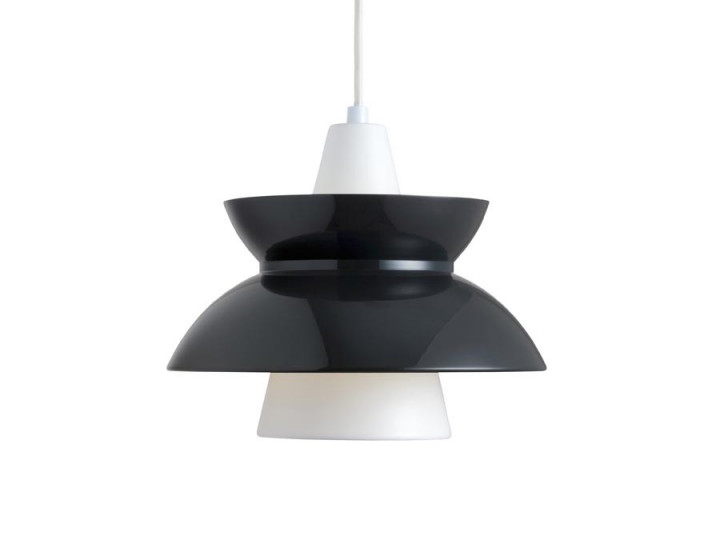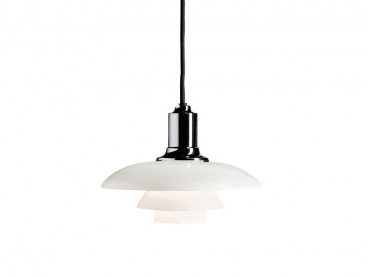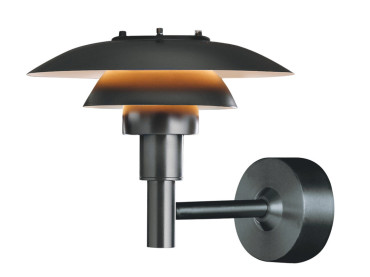Mid-Century modern scandinavian pendant lamp Doo-Wop dark grey by Louis Poulsen
-
Poul Henningsen
-
Louis Poulsen
- LP036 Delivery time 1 / 2 weeks
Mid-Century modern scandinavian pendant lamp Doo-Wop dark grey by Louis Poulsen. New edition. Originally introduced in the 1950's . Was designed in close cooperation between the Navy Buildings Department and Louis Poulsen. The pendant was used for many years in the builidngs of the Navy for many different applications such as cateens and offices. The Navy Pendant, which was the name at that time, was widely used because of the unique lighting properties and utility. Not until the early 1980's the product was taken out of the Louis Poulsen catalogues. In recent years, more and more of the old editions have been sold again through antique stores and auctions. This has caused a demand and Louis Poulsen has been asked to re-launch the products. The new version is very close to the original. However, the colours have been updated to correspond to the colours of the time, while the production methods are the same. The shades are still and spun by hand and completed with the fine rolled edge which gives the shades a special opticial volume. The brass variant challenges the craftsman as it is spun from a solid brass plate and appears polished. Light source : E27 60W.
| Year | 1950 |
| Dimensions | Ø : 28,3. H 24,5 cm. Cable : 3 m. Weight : 1 kg |
| Material | Shade: Spun aluminium. Suspension: Spun aluminium. Struts: Stainless steel. |
| Style | Classique Neuf |
| Origin | Denmark |
| Fournisseur | Louis Poulsen |
Poul Henningsen
Denmark (1894-1967)
Danish architect Poul Henningsen, known by his initials, PH was obsessed with light. He is the legendary creator of the lighting series carrying his name. He can be said to be the worlds first lighting architect.
Poul Henningsen devoted his entire career to investigating the importance of light for our well being. He worked on the theory that the observer should not be subjected to direct glare from the electric light source. Henningsen used a series of layered shades to both spread the light and conceal the light bulb, thus creating a softer more diffused lighting. One of Denmark's major figures in 20th-century lighting design, Henningsen was also an independent architect, designer of theatre interiors and tubular steel furniture, critic, and editor of the magazine Kritisk Revy (Critical Review). Highly critical of the widespread lack of imagination in domestic lighting in Copenhagen, Henningsen came to prominence with the first of his multi-shade lamps designed in 1924, setting the pattern for his subsequent lighting work. Known as the Paris Lamp (and later as the PH lamp) it won a competition for a light fitting for the Paris Exposition des Arts Décoratifs et Industriels of 1925, where he was awarded a Gold Medal, and was put into production by the Danish lighting manufacturer Louis Poulsen.
Henningsen's design principles were based on the scientific analysis of the ways in which lampshades distribute light, glare, and reflection. The PH lampshades were composed of a series of separate, interleaved elements that gently diffused the light throughout the space in which it was situated as well as directing it downwards


















